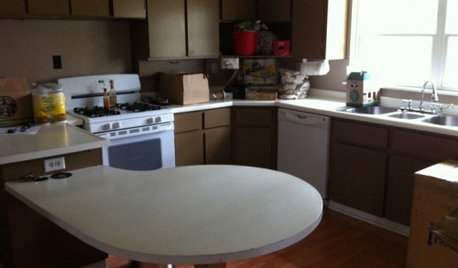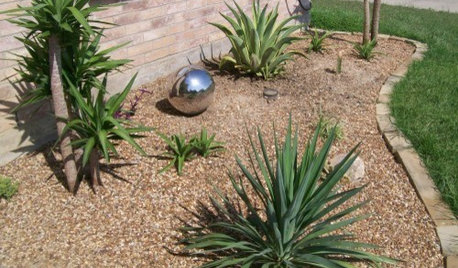I've been reading through everything on the forum (tons of great info!), while planning to put in some dwarf apple trees and a couple asian pears. Now, I think I'm almost there, but I do have some questions which I'm hoping some of the very knowledgeable forum-goers can answer.
I have limited space to work with, as other parts of the yard are either unsuitable (wet, shade, etc) or full of berry/garden plantings. The open strip is about 30 feet wide and 65 feet long. It gets mostly full sun (several shade trees just over the property line in various directions 50-100 feet away). The soil is well drained, as the strip is along the top of a hill (8 feet to a steep drop-off (with gooseberry/current/blueberry on it) on the west, 20-25 feet to blackberries on the east). The soil is only so-so, with lots of rocks (typical New England), some large and close to the surface. I'm in southwestern CT, zone 6, possibly 7 under the new Arbor day zones. I plan to mix in some leaf mold/mulch and top dress extensively, before adding a layer of wood-chips.
I'm focusing entirely on disease resistant cultivars, as I don't plan to spray, other than dormant oil. Once the blooms drop, I'll bag the apples.
I've done a lot of online research, but was wondering if someone from this forum could weigh in on the following questions. I know there is a lot, but please don't let that discourage you from responding- feel free to pick one or two.
1.) Will the below spacing work? I don't think it is too much of a stretch for the B9 rootstock, but I may need to do more summer pruning on the G16, G11, and M7 to keep them small enough. I don't want anything getting over about 8 feet tall (pick and bad with nothing but a footstool).
2.) Will the asian pears be a problem? If I prune them enough to keep them down to size, will they ever bear fruit? If not, would OHxF333 rootstock make a difference? I don't see it in the varieties I want at Cummins Nursery, but I may be able to find it if I shop around a bit.
3.) Of the places where I have a choice, should I go for G11 or G16?
4.) The hill is sloping southward, starting with the Ecos Red at the top. Does the order layed out below look appropriate? I tried to set things up so that similar root-stocks (taking into account vigor) would be close together (the more vigorous ones at the ends and weaker in the middle).
5.) Will I be able to keep the Ecos Red down to size? It was marketed as "semi-dwarf", but it is on Ranetka, which is really standard size.
6.) Would I be better off with a more staggered spacing? I could squeeze some of the smaller dwarfs (B9) in a second row to the east (hill crest, 8 feet, primary row, 10 feet, secondary row with small trees, 10 feet, blackberry row). But, I'm hesitant to cast shade on the berries. Also, spacing the trees further will reduce their root competition and maybe cause them to grow faster. Another option would be to do a 3 in 1 hole, as DWN suggests.
7.) In my location, will I be able to grow mostly good apples by bagging soon after petal-drop?
8.) How big a threat is fire blight in this area? I've tried to stay away from anything susceptible, but it did limit some of my selections (especially for asian pears, where I'm breaking my rule by going for Housi).
9.) Any other comments on the varieties or the overall plan would be appreciated.
One long row with the following spacing:
Ecos Red (planted this spring)
6 ft
Enterprise, G16
5 ft
William's Pride, G11
5 ft
Goldrush, G16
5 ft
WineCrisp, G11 or G16
5 ft
Ashmead's Kernal, B9
5 ft
Sweet 16, B9
5 ft
Priscilla, B9
5 ft
Initial x6163 M7 (only semi-dwarf, but this cultivar is non-vigorous)
5 ft
Korean Giant asian pear (late), OHxF97 or Betulifolia
6 ft
Housi asian pear (early), OHxF97
10 ft
Kid's Playground
total space = ~62 feet
2nd Goldrush, G16, by south-facing retaining wall (hopefully extending the growing season in years when wouldn't normally ripen)
total: 10 apples, 2 asian pears
Harvest Order:
William's Pride- Late July, red, early bloom, 1 mth keeper
Initial- Late Aug, red, triploid, 2 mth keeper
Sweet 16- Sept-Oct, red, mid bloom
Priscilla- Late Sep, gold, early mid bloom, 2-3 mth keeper
WineCrisp- Mid Oct, red, mid bloom, 8mth keeper
Ashmead's Kernel- Mid Oct, russet, mid bloom, 3-4 mth keeper
Enterprise- Late Oct, red, mid or mid-late bloom, 4-6 mth keeper
Goldrush- Early Nov, gold, late bloom, 8+ mth keeper
Considered, but will probably pass on for now:
Sundance
Pome Gris (hard to find, let alone on dwarf rootstock)
Bramley's seedling
Spartan
Kid's Orange Red
Akane
Liberty (I'm not really a fan of Macs...)
Belle de Boskoop
Hudson's Golden Gem














kokos
maryneedssleep
Related Discussions
A vole severed all my apple tree's roots
Q
Quick apple pruning question on newly planted tree.
Q
planting apple trees question
Q
Advice for Severe Pruning (Apple / Plum)
Q
bob_z6Original Author
kokos
kokos
kokos
maryneedssleep
bob_z6Original Author
bob_z6Original Author
Scott F Smith
alan haigh
bob_z6Original Author
Scott F Smith
alan haigh
kokos
maryneedssleep
Scott F Smith
theaceofspades
alan haigh
Scott F Smith
alan haigh
Scott F Smith
alan haigh
bob_z6Original Author
Scott F Smith
hoseman
Scott F Smith
milehighgirl